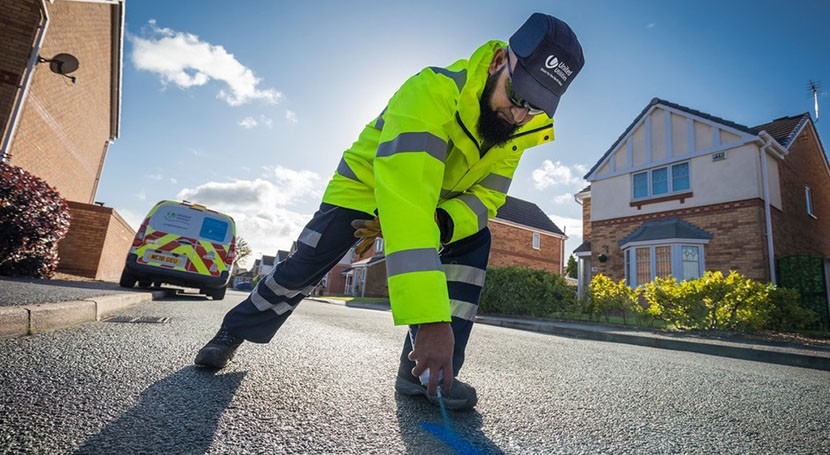Comprehensive Guide to Water Leak Detection for Homeowners and Organizations
Comprehensive Guide to Water Leak Detection for Homeowners and Organizations
Blog Article
Innovative Solutions for Early Discovery of Water Leakages in Buildings and Facilities
From advanced leak discovery modern technologies to the release of IoT sensors for real-time surveillance, the landscape of leak prevention is progressing quickly. Automated water flow evaluation systems are reshaping exactly how leakages are determined and resolved, leading the way for an aggressive strategy to water leakage discovery.
Advanced Leak Discovery Technologies
Advanced leakage discovery technologies, furnished with innovative sensors and algorithms, play an essential role in promptly identifying and identifying water leakages in different setups. Electromagnetic sensing units can recognize changes in electro-magnetic areas caused by water, supplying yet another layer of leakage detection capacity.

IoT Sensors for Real-Time Monitoring
In the realm of modern-day water leak detection, the assimilation of IoT sensors for real-time monitoring represents an essential advancement in boosting proactive leakage discovery capacities. These sensing units use constant monitoring of water supply, offering real-time information on water circulation rates, stress variations, and temperature adjustments. By leveraging IoT modern technology, these sensors can discover even the tiniest abnormalities in water usage patterns, making it possible for very early recognition of possible leakages prior to they intensify into major issues.
IoT sensing units transmit data to a central system, where advanced formulas analyze the information and create signals or notices when abnormalities are spotted. This real-time surveillance capability permits building owners or facility supervisors to without delay attend to leaks, reducing water damages, minimizing repair work costs, and conserving water sources.
Moreover, IoT sensors can be incorporated with building monitoring systems, permitting automatic feedbacks to found leakages, such as shutting down water valves or turning on pumps to reduce the influence of leaks. Overall, the execution of IoT sensing units for real-time monitoring dramatically boosts the performance and effectiveness of water leak discovery in structures and framework.
Artificial Intelligence Algorithms for Leakage Prediction

One trick benefit of using artificial intelligence for leakage prediction is its ability to continually find out and improve its precision gradually. As even more information is gathered and fed into the formula, it can refine its predictions Go Here and adjust to altering conditions, inevitably increasing the integrity of leakage discovery systems.
Furthermore, artificial intelligence formulas can assist in identifying subtle indications of leaks that might go unnoticed by typical tracking methods. water leak detection. By examining complicated information embed in real-time, these formulas can offer early cautions and alerts, allowing for punctual treatment and preventative maintenance to minimize potential water damages and linked expenses
Using Thermal Imaging for Leak Detection
Thermal imaging technology offers an appealing technique for detecting water leaks in numerous systems and infrastructures. By utilizing infrared radiation and temperature level variations, thermal imaging video cameras can identify concealed leakages that are not quickly visible to the naked eye.
One of the vital advantages of thermal imaging for leakage discovery is its non-intrusive nature. On the whole, the usage of thermal imaging technology enhances the performance and accuracy of water leak detection, making it a beneficial device for preserving the honesty of structures and frameworks.
Automated Water Circulation Evaluation Solutions
Just how can computerized water circulation analysis systems change the detection and management of leaks in numerous systems and frameworks? Automated water flow analysis systems use an aggressive strategy to leak detection by continuously keeping track of water flow rates and patterns. By establishing baseline information, these systems can swiftly identify discrepancies that may indicate a leakage, enabling timely intervention to avoid extensive damages.
These systems make use of innovative formulas to assess real-time information and provide prompt alerts when abnormalities are spotted, permitting quick action to be taken. Furthermore, computerized Source water flow evaluation systems can be integrated with structure administration systems or IoT systems, enhancing overall effectiveness and enabling remote tracking capabilities.
Additionally, the information gathered by these systems can be utilized for anticipating upkeep objectives, assisting to identify potential weak factors in the framework before leakages take place. On the whole, the application of automatic water circulation analysis systems can considerably enhance leak discovery and management methods, inevitably resulting in cost savings, reduced water wastage, and useful link enhanced sustainability in structures and framework.

Conclusion
To conclude, the assimilation of advanced leakage discovery modern technologies, IoT sensing units, equipment discovering formulas, thermal imaging, and automatic water flow analysis systems uses innovative solutions for early discovery of water leakages in buildings and infrastructure. These technologies make it possible for real-time surveillance, forecast of leaks, and efficient discovery techniques to stop water damage and wastefulness. Carrying out these options can help in preserving the stability and sustainability of water supply in various settings.
Report this page